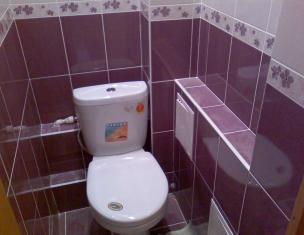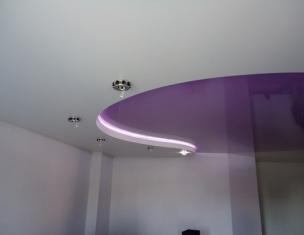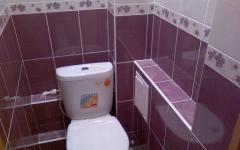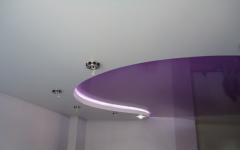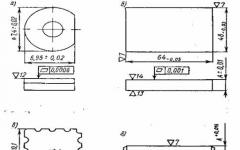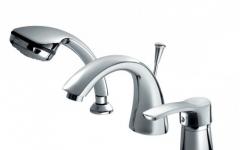How to hang a chandelier from the ceiling with your own hands? It would seem like a question. Slide the upper cap of the chandelier down, hang it on a hook, connect the wires, slide the cap on - that's all. But even in this, the simplest case, difficulties can arise. Which? Let's figure it out.
How are chandeliers hung?
There are four ways to hang chandeliers:
- The ceiling hook is the oldest and most reliable. Requires a solid ceiling and special fastening in it.
- Standard mounting plate (bracket) - due to the distribution of the load on several attachment points with a small weight of the chandelier, it is quite reliable when fastening with dowels and nails into plastic sleeves.
- The cross mounting plate works similarly to the straight mounting plate, but has more attachment points. It is used for chandeliers-plafonds adjacent to the ceiling.
- The I-beam mounting platform is designed for mounting heavy chandeliers at several points.
All these mounting methods do not allow you to pull the chandelier close to the ceiling in low rooms. Mounting strips are curved to allow wires to exit. Further in this article, the refinement of the mounting plate will be described, which allows you to press the chandelier close to the ceiling.
Installation of regular fixtures of chandeliers is simple: self-tapping screws in clips-sleeves. The diameter of the self-tapping screws can be determined by the mounting holes in the mounting plate; self-tapping screw length - 40-60 mm. For low ceilings, it is preferable to use ceiling chandeliers, without a rod.
Much more attention should be paid to safety when installing chandeliers: when working on a hill, even a slight electric shock is fraught with a fall and serious injury. Various non-standard situations related to the suspension and installation of chandeliers will also be considered: a suspended ceiling with a chandelier, how to hang a chandelier on drywall.
Phase indicator and wire phasing
First of all, you need to check the phasing of the wires for the chandelier. The neutral wire (neutral) is common, and the phase wires are connected to the lamp sections through the switch.
Phase / zero wiring is determined by a special device - a phase indicator. It can be purchased at any electrical supply store. The indicator is inexpensive. Phase indicators come with a neon light bulb and a quenching resistor and electronic ones.
The indicator looks like a screwdriver. When using it, the device is lightly clamped between the index and middle fingers of the right hand in the place intended for this; it is either highlighted in color, or has a notch and is separated from the sting by a safety cuff. TOUCH INDICATOR STING DURING OPERATION DANGER TO LIFE!
![]()
When checking the phasing, the thumb touches a special metal terminal on the end of the device handle, or a button in the electronic indicator, and the indicator sting touches the wire under test. If it is phase, the lamp flashes or the corresponding symbol appears on the display. IT IS IMPOSSIBLE TO HOLD THE WIRE WITH THE OTHER HAND, EVEN FOR THE INSULATION! The indicator works ONLY ONE - RIGHT - HAND!
Before checking, turn out/turn off BOTH plugs. Then the ends of the wires for the chandelier sticking out of the ceiling are exposed, the ends are spread apart, the plugs are turned on, and the switch is turned on. A stool is placed on a rubber mat, and from it, with the right hand, a phase wire or two phase wires are found with an indicator if the chandelier switch is double. Then the switch is turned off without touching the plugs, and the phasing is checked again. Now the indicator should not glow when you touch any of the wires.
If the phase remains somewhere, the switch must be switched to a phase break, and the neutral wire, if the switch is unipolar, should be switched directly. This work is simple, and picking the wall is not required. But, if you are not an electrician, then you need to invite a specialist for it. No jokes with electricity are in vain.
Search wiring
Before drilling holes for fasteners in the ceiling, you need to determine where the wiring lies so that you do not interrupt it when drilling. For reliability, the search for wiring must be done under load, i.e. under current. Give the load on the wiring as follows:
- Turn off the plugs and the chandelier switch.
- The wires sticking out of the ceiling are temporarily increased to the floor; joints are insulated with electrical tape.
- Instead of chandelier sections, cartridges for incandescent lamps are also temporarily connected.
- Light bulbs are screwed into the cartridges by at least 60 watts, and better - by 100-150 watts.
- Plugs and switch included; you can start looking for wiring.
The search for wiring is best done with an electronic indicator; neon indicator works only in direct contact with live parts. There are special devices - wiring finders, but they are more expensive, and the accuracy is no more than two thicknesses of plaster. If the wiring is also hidden in strobes, then the error will be about 5 cm, which is not enough. The indicator at any depth of occurrence gives an accuracy of 1-2 cm.
The indicator is led by placing a finger on the button along the ceiling perpendicular to the intended direction of wiring. When the phase icon appears on the display, make a mark with a pencil and drive on. When the icon disappears, a second mark is made.
Then the same place is passed in the opposite direction; there will be two pairs of marks. In the middle between the internal and lies the wiring. Then they shift by 15-20 cm along the wiring and the search is repeated until the end of the working area.

Mounting the chandelier on regular fixtures
Mounting a chandelier on standard fixtures comes down to wiring power wires for sections of light bulbs. When checking the phasing of the wiring, the neutral wire must be immediately noted somehow, at least by bending it close to the ceiling with the indicator sting. Then the plugs are turned out / turned off and the wires are brought into the chandelier.
In modern electrical appliances, the neutral wire is always yellow with a longitudinal green stripe, and all wires are pre-wired into the connector - the terminal block. The neutral wire of the wiring is connected first: insert it into the neutral terminal and tighten the screw. Then the phase wires are connected. They push the cap to the place - the work is over.
And if the wiring in the room is of two wires? Or grandfather's chandelier, or antique, and you can't see where the phase is, and where is zero?
In the first case, a small piece of the same wire section is added to the phase wire (PLUGS - OFF!) And both sections of the bulbs are switched on for one phase. The whole chandelier will be turned on with one switch.

chandelier
If the wires in the chandelier are not marked, and there is no terminal block, then the chandelier needs to be ringed. This is done by a regular tester. RINGING THE CHANDELIER WITH A CONTROL LIGHT FROM THE 220 V NETWORK IS DANGEROUS TO LIFE!
For continuity, we screw the SAME into all the cartridges of the chandelier, i.e. one power and brand, incandescent lamps; better low-power, 15-25 watts. Housekeeper light bulbs are no good, dialing them will not work.

The scheme of the chandelier is given in the figure. From it, a person familiar with electrical engineering or at least not forgetting Ohm's school law can see that if the resistance of one light bulb is R, then there will be R between zero and FI; between zero and FII - 0.5R, and between phases - 1.5R. To ring three wires in pairs, six measurements are needed.
"Special" chandeliers
Recently, chandeliers have appeared on sale, equipped with a remote control for adjusting the light, a fan, an air ionizer or even an air conditioner (more precisely, its evaporative unit). When buying such products, the following rules must be observed:
- See how it connects right now. If, in addition to the usual terminal block for household wiring, some strange ends stick out there, ask for instructions and read it.
- If it is not clear from the instructions how to hang such a chandelier yourself, ask if its installation is included in the price of the product, and what are the seller's guarantees.
- Suddenly, the outlet works on the principle of “sold and forgot”, it is better to look for the same thing elsewhere.
Chandeliers with additional functions - products are quite specific; there are few firms or craftsmen involved in their installation, and “special” chandeliers are not cheap.
emergency situations
And how to properly hang a chandelier on the ceiling if there is no regular fixture, or it cannot be used? To do this, you will have to stock up on a tool for working on concrete, stone, wood, drywall, and work.
Low ceiling
The standard version is a chandelier-plafond and fastening with a cross bar. But what if the room is low, but you still don’t want to install a ceiling? In this case, you can gain 10-15 cm by hanging a chandelier with a rod on the ceiling without a hook.
To do this, the standard mounting plate is straightened, cut so that it is hidden under the cap, and new holes are drilled in it for self-tapping screws. Next, the chandelier needs to be slightly modified:
- Lights and, if possible, all fragile details are removed from the chandelier. It is better, if the design allows, to remove the rod immediately.
- The wires of the chandelier are removed from the terminal block.
- In the rod, immediately behind the thread, drill in a row along the rod, three holes 4-5 mm. You just need to make sure that they are all under the cap.
- Three pieces of fishing line are passed into the holes of the removed rod. Their ends are attached to the ends of the wires of the chandelier and tightly wrapped with narrow tape.
- The rod is put in place, gently sliding over the wires and pulling up the pieces of fishing line until the ends of the wires come out of the holes. If one is caught, it is corrected with a wire hook or tweezers.
- If the rod is non-removable, then pieces of fishing line are inserted into the holes one by one, starting from the bottom, and the wires are also brought out into them.
- The wires are reintroduced into the terminal block.
The purpose of this refinement is to bring the wires to the side so that they are not pressed against the ceiling and transferred by the edge of the rod. Attention: if the rod is fixed or curly, the cap must remain on it. Otherwise, he will not get dressed later because of the wires sticking out to the side.

Next, a mounting plate is installed on the rod between two regular nuts, and the chandelier is attached to the ceiling with screws. Most likely, nuts will not be needed: in most chandeliers, the bar is attached to the rod by flaring.
Connect wires. It may turn out that the terminal block now does not fit in the cap - it's okay, it is completely removed, and the wires are connected by soldering; joints are insulated with electrical tape. It is not recommended to connect the wires with a twist: there will be problems with a flashing chandelier later.
Now we mount the chandelier to the ceiling with self-tapping screws. We do not tightly wrap the screws into the sleeves, otherwise the chandelier will become oblique.
Option for weak but dense ceilings: laminate, MDF, plywood. Instead of a mounting plate, we make a circle with a diameter of 5 mm less than the inner diameter of the cap. In the center - a hole for the rod; in a circle - 4-6 holes for self-tapping screws. You will also need to make a hole for the wires.
If you need a hook
Fixing a chandelier to a concrete ceiling on a plank or I-beam does not raise any questions. And if the chandelier you like is hooked, but it is not at home? A little work - and a very reliable hook you can put yourself:
- If a hook-screw is used, then in the ceiling we drill a hole with a diameter of 10 mm more than the diameter of the screw, and a depth along the length of the thread + 10 mm.
- Lubricate the thread of the hook with a thin layer of consistent (thick) lubricant.
- We tightly wind two copper wires with a diameter of 0.8 - 1.2 mm onto the screw thread. At the beginning and at the end of the thread, we leave a mustache of 10 mm and spread them 90 degrees. When viewed from the end of the screw, the mustache should diverge in four directions perpendicularly.
- We spray the hole inside with a spray bottle, or stick a richly moistened cloth into it with a stick, hold for 1-2 minutes and take it out.
- We prepare 50-100 g of alabaster or gypsum mortar; this is convenient to do with a disposable plastic cup. When mixed with water, the solution heats up. Mix until creamy consistency.
- Using a stick (not a spatula), as quickly as possible (alabaster and gypsum harden quickly), we fill the solution into the hole until it is filled.
- Just as quickly, into the still liquid solution, we push the hook with the wire wound around the thread; the whiskers of the wire will be bent.
- We remove the squeezed out solution and wait for it to solidify in the hole. The solution should not only solidify, but also cool to room temperature. This takes at least 2 hours, but it is better to wait a day. Now the chandelier can be hung.

If a hook with a support platform for fastening with self-tapping screws, we make nests for them in the same way, but we take a thinner wire - 0.4-0.6 mm. And you will have to knead a separate portion of the solution for each nest - it hardens very quickly to a mushy state.
Such nests serve for centuries without shrinking like plastic. When wrapping / turning the hook 2-3 times, the socket does not loosen. If necessary, it is easily cleared of filling with a narrow chisel and redone. When repairing a gypsum-alabaster nest, you can plaster it, and then dig a hole in the plaster for a hook.
Chandelier in the stretch ceiling
Installing a chandelier on a stretch ceiling is the most difficult case. First of all: a chandelier with incandescent lamps and a stretch ceiling are incompatible. Even from a three-arm chandelier with 40 W lamps, spots will appear on the ceiling in a month, and within 3 months it will begin to creep. Economy light bulbs in chandeliers recessed into the ceiling quickly burn out due to poor heat transfer; The only option here is LED bulbs.
Then, installing a chandelier in an existing stretch ceiling is impossible: it will have to be removed and a new one installed. Trying to cut holes in an already stretched ceiling is useless - the film or fabric will immediately spread.
And finally, before calling the ceiling masters, you need to prepare a fixture for the chandelier. The regular fixture of the chandelier is not designed for installation in stretch ceilings, therefore, if the chandelier is hung on a hook, it must be installed in the ceiling in advance.
For mounting on planks or I-beams on the base ceiling, you need to attach a pillow made of waterproof BS or MDF plywood, at least 16 mm thick, on the brackets, as shown in the figure. A wooden or ordinary plywood pillow in the inter-ceiling space will soon dry out, and this will end in an accident.

According to the installed pillow, the ceiling mounts will take measurements and make holes in the panel, framed by grommets. Through them, the chandelier will be attached to the pillow with long fasteners, with a gap for the “play” of the ceiling. Wide holes are additionally reinforced with "spider" supports, but this is a subject for a separate discussion.
If it is supposed to drown the chandelier in a stretch ceiling, then it should hang in place during the measurement. But still, a chandelier in a stretch ceiling is not the best option in terms of costs. Only due to the uneven distribution of the load due to the presence of holes, such a ceiling is more likely to sag and lose its appearance than a solid one.
Chandelier on plasterboard ceiling
Attaching a chandelier to a plasterboard ceiling is also not easy, but still easier than in a room with a stretch ceiling. There are three possible cases here:
- The chandelier weighs up to 3 kg and is mounted on a hook. In this case, you need a special butterfly hook. It consists of a specially designed plastic clip and a screw hook. A hole is drilled in the drywall under the butterfly clip, the hook is screwed into the clip one or two turns. Then the clip is inserted all the way into the hole and the hook is turned to failure. The inside of the butterfly unfolds into petals, which fix the hook.
- Chandelier - up to 7 kg in weight. In this case, only fastening on slats (console) is permissible. A butterfly dowel is used for each attachment point; simply a mole. By design, it is similar to the cage of a butterfly hook, and when a self-tapping screw is screwed into it, it opens in the same way to the sides inside the interceiling space.
- Heavy chandelier. To hang it on a hook, you will need one collet pin with a diameter of at least 12 mm; for mounting on a bar - at least two 8-10 mm each. To install a collet stud in the base ceiling, holes are drilled through drywall along the diameter of the stud sleeve and a depth in its length. The stud is screwed a little into the sleeve, inserted through the hole in the drywall into the base ceiling until it stops, and again the stud is screwed all the way. The collet diverges and wedged in the base ceiling, and a threaded end remains on the outside, onto which you can screw a hook with a threaded socket, or several ends - you can put a pillow on them under the chandelier bracket.

Note: hanging a chandelier on a hook through drywall is unreliable - the collet is held in the ceiling by friction. Therefore, for suspension to a plasterboard ceiling, it is better to choose chandeliers with a cantilever mount.
How to shoot chandeliers
And how to remove the chandelier from the ceiling, if necessary? All described methods of fastening allow dismantling in the reverse order of installation.
In the first place, again, safety precautions: turn off the switch, turn off or unscrew the plugs. Then we remove all fragile parts from the chandelier: crystal pendants, etc. Next, we turn off the wires, isolate their bare ends, and only after that we proceed to disassemble the mount.
With a stretch stretch or plasterboard ceiling, we remove only the chandelier itself. We do not touch pillows, butterflies, collets and other auxiliary parts. This is especially true for collets and butterflies: these are disposable parts, they are not designed for re-assembly.


